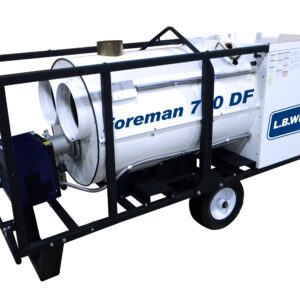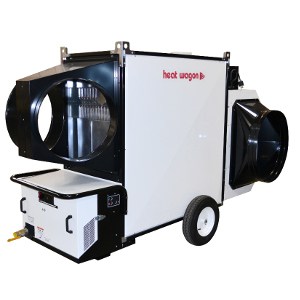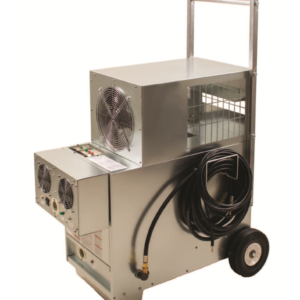When talking about disaster restoration, and the necessary equipment needed for those looking to start their own service offerings, two tools are vital for success against flood damage: industrial heaters and dehumidifiers.
It doesn’t take long for water and excess moisture damage to lead to bigger issues like unpleasant, lingering odors, structural damage, and mold growth. Once some of these problems begin to take shape, the property value immediately becomes in jeopardy, and more money will be needed for serious repairs.
Time is of the essence, so disaster restoration services need to act quickly to better mitigate irreversible water, excess moisture, and flood damage. This begs the question, which method is best and most efficient: industrial heaters or dehumidifiers?
Key Principles for Drying
There has been some disagreement in the industry as to the effectiveness of industrial heaters vs. dehumidifiers. Many have shown concern over using heaters in the hotter summer months, however there are many advantages to setting up a proper system involving heaters, dehumidifiers, and air movers for a successful damage restoration job.
Every water damage solution needs to consider 4 key principles:
- Amount of Water to Remove
- Temperature
- Air Movement
- Humidity
All of these principles are distinct, yet need to be addressed together for successful restoration. When more free water is present, less vapor needs to be removed by the dehumidifiers. Controlling and removing large volumes of water through extraction is essential.
When residual water and water vapor still linger, now you need to consider how to remove all the other points of moisture and saturation in the environment. Temperature control is a complex principle in disaster restoration. The equipment works best at specific temperatures, so utilizing a portable heater to raise the ambient temperature of the space will aid in the function of the dehumidifier in colder temperatures, and speed evaporation of the water remaining in the structure.
In addition to introducing heat to the drying environment, you can aid in moisture removal with industrial air movers to promote evaporation from structural materials. It will also assist in creating more uniform drying on and within every surface.
Ensuring the entire area is sufficiently dry on and underneath surfaces is crucial, as lingering odor and mold spores can flourish on even a minimal amount of trapped moisture. Closing the circuit of work includes using dehumidifiers to manage the specific humidity or GPP (grains per pound) of the area. When the relative and specific humidity is higher, drying time will take longer. The restorer will also confirm a structure is returned to pre-loss conditions by measuring the moisture content of materials with both penetrating and non-penetrating meters.
Your Disaster Restoration Journey Starts with Thermal Flow
Regardless of the weather outside, the four principles of drying in disaster restoration should be considered for success. Even if it’s 100°F in a desert climate, industrial heaters can effectively be paired with air movers and dehumidifiers to properly and quickly dry the damaged area.
Thermal Flow has the top-rated equipment to get you started with your disaster restoration business. Our team of industry experts in the fields of disaster restoration, climate control, and bed bug remediation are always available to guide you through any questions you may have and properly equip you with the knowledge necessary to get started on the right foot.




